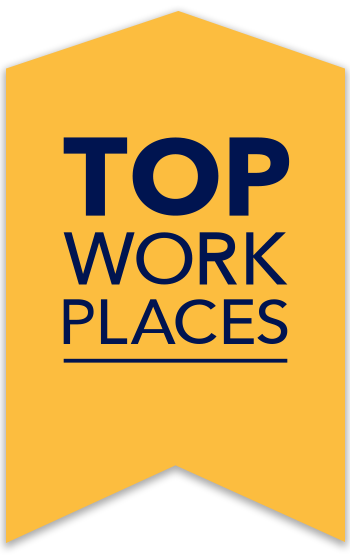High employee turnover is costly for companies. Employee Benefit News reports that the average cost to replace a worker is approximately one-third of their annual salary. There are productivity, recruitment, and onboarding costs too. The good news is that you can do things — starting today — to retain talent & boost employee morale.
There are many reasons why employees choose to leave their jobs for new opportunities. Some may not be within your control, including compensation issues, heavy workloads, and overtime. But there are other reasons why employees leave that can be prevented, such as negative workplace culture, alignment, and management skills.
Let’s take a closer look at unwanted employee turnover and what you can do about it.
Unfair compensation and seeking higher salaries
So, why do people quit their jobs? It’s not surprising that many point to money as one of the primary reasons why employees leave. After all, no one wants to work for less than they believe their time and talent are worth.
Pay is important, and employees undoubtedly know when their compensation isn’t good enough. The Workplace Survey — the same survey that powers the Top Workplaces program — measures employee responses to this statement:
“My pay is fair for the work I do.”
Knowing if your employees believe they are being compensated fairly is essential. And the best way to find out is to ask them. In addition, some valuable tips for ensuring fair pay include:
- Maintaining open lines of communication.
- Staying aware of the current market.
- Keeping a well-defined compensation strategy.
What’s most important to employee retention is that employees feel valued and appreciated. And pay plays a role in that, but it’s not the way to show employees they are valued. Instead, focus on genuine appreciation, recognition, and connection.
Learn more: Pay Transparency
Excessive workload and burnout
Engaged employees are your most productive workers and the least likely to leave your company. But beware: Overworking your team can quickly lead to burnout, one of the most common reasons employees quit. Symptoms of employee burnout include lower productivity, absenteeism, lack of energy, and more.
Recent research points to higher levels of employee burnout, especially now. 40 percent of employees report they experienced burnout during the pandemic. It’s also one of the causes of employee turnover. Three tips for preventing employee burnout include:
- Promoting and focusing on employee work-life balance.
- Encouraging and honoring vacation time.
- Closely monitoring employee schedules and individual workloads.
Recognize the signs of burnout so that you can identify them early on. By staying proactive, you can help to support employees in the ways that matter most.
Learn more: How Employers Can Prevent Burnout in Remote Employees
Toxic workplace culture and environment
An intentional, people-first workplace culture is one of the qualities of a great workplace. But a toxic workplace culture filled with interpersonal conflict and management that doesn’t prioritize its employees is one of the main reasons why good employees leave.
There are lots of ways to improve company culture and drive employee engagement, including:
- Asking employees for anonymous feedback.
- Listening to and acting upon employee feedback.
- Practicing genuine employee appreciation.
- Promoting two-way communication.
Poor relationship with leaders and perception of leadership
A poor relationship between employees and leadership is one of the top causes of employee turnover, whether it’s because of an unprepared manager or a lack of communication.
Good managers have key traits in common, including:
- Strong communication
- Displays of empathy
- Accountability
There are many more qualities of a good manager to consider, but these three are a strong start. Look for these characteristics during recruitment to find the best fit for your company.
Seeking better employee benefits
From healthcare to vacation time, it’s essential for your workforce members to receive an excellent benefits package along with fair pay. Companies with flexible work arrangements consider:
Some benefits you might consider adding to your package include:
- Tuition reimbursement
- Flexible work hours
- Free or discounted gym memberships
Great benefits don’t have to cost your company much, provided you’re creative with them. Seek things that can make your company stand out as a workplace with great job benefits, and then find a way to fit them into the budget.
Lack of work-life balance or workplace flexibility
Modern employees value workplace flexibility and work-life balance more than ever before. The more of each you can provide, the more likely your company will retain your top talent and continue growing.
There are plenty of workplace flexibility best practices. Three examples include:
- Allowing remote work
- Open-ended work hours
- Focusing on individual needs
The more you can acknowledge the needs of every individual in your organization, the better off your workforce will be.
Wanting to work remotely
The pandemic showed many employees the benefits of working remotely. Now it’s an enticing perk that’s tempting employees to change jobs and a popular recruitment strategy for companies looking to attract talent. Increasing the ability of employees to work remotely can help your company to retain its employees. For some, the option to work remotely is as easy as having access to a laptop and a stable WiFi connection.
Whether your workforce is partially or fully remote, there are many ways to ensure and improve remote employee engagement. From encouraging open communication to asking for employee feedback, acting on these ideas will help you to minimize unwanted employee turnover.
Limited development & promotion opportunities
Today’s smart companies are finding new and creative ways to attract new talent. Finding better job opportunities is one of the main reasons why good employees leave. Why stick around for a job that won’t allow you the chance to earn more money?
To support advancement, you can:
- Hire internally
- Create a clear path for better positions
- Identify and nurture skills
Don’t let your employees feel as though they’re running on a never-ending treadmill that’s taking them nowhere. Often, this is a sign of quiet firing. Instead, engage with them, provide a way forward, and guide them there.
Lack of recognition & feeling unappreciated
All people desire recognition and appreciation for the effort they give. One of the main reasons employees leave is because they don’t receive the credit they deserve for their work.
Employee appreciation is a top culture driver, and research shows it has the most significant impact on connection at work. Creating a culture built on appreciation is one of the least expensive, most powerful ways to limit unwanted turnover. Three examples include:
- Take every opportunity to give a sincere compliment or a simple “thank you.” It goes a long way.
- Think about the ways people prefer to be appreciated. If you don’t know, ask.
- Encourage managers and leadership to role model a culture of appreciation.
Allowing appreciation to fall through the cracks during stressful times is when it’s most valuable and one of the reasons employees leave.
Learn more: 12 Benefits of Employee Recognition
The desire for greater trust and autonomy
Employees value independence and trust in the workplace. They can resent leadership when they feel like they’re being micromanaged.
Ensure employee autonomy without compromising the growth and development of your company. Create a culture of accountability that empowers your employees to own and execute their responsibilities.
Lack of challenging or meaningful work
Employees find meaning in their work more productive, happy, healthy, and engaged. When people clearly understand how their individual contributions benefit the organization and the people it serves, they’re motivated by a whole lot more than a paycheck — and they’re more likely to stay with your company.
Here are a few tips that will help to encourage an environment where employees find meaning and feel challenged by their work:
- Look for cross-training or development opportunities.
- Incentivize managers for the growth of their employees.
- Ensure your company’s mission resonates with the many.
- Enable employees to find and design work methods they can be proud of.
Work without meaning is drudgery — and a primary reason why employees quit. But meaningful work feels effortless. And because most people spend the majority of their waking hours at work, they need to know that their time is worthwhile.
Lack of engagement
Employee engagement is one of the most powerful ways to limit unwanted turnover. Employees engaged at work are less likely to leave your organization for a better opportunity. If your workforce is committed to their jobs and passionate about what they’re doing, they won’t have a reason to seek employment elsewhere.
Effective employee engagement strategies are built upon a foundation of honest and anonymous employee feedback. It makes employees feel heard and safe. Other ways to increase employee engagement include:
- Recognizing and appreciating performance.
- Promoting transparency and accountability.
- Living your company values.
- Creating a clear path for growth and development.
Maintaining employee engagement is not always easy, especially when trying to keep remote workers engaged, but it is vital to creating a strong workplace culture. Focus on it, and you will reap the rewards.
Concerns about the company’s financial stability
Nothing will make your employees feel less secure about their job than layoffs, reduced hours, and budget cuts. All of these suggest that an organization is not financially stable.
If you want to maintain your employees’ trust, be open and honest about the company’s financial state to the best of your ability. If they feel like they know what’s going on, they’re less likely to assume the worst and move on.
Not feeling connected to company values & mission
While your company will never stop changing, a solid foundation of values and a meaningful mission will hold your organization together, especially during turbulent times. When there is a disconnect between the stated company values and mission and what’s reflected through action, it can cause them to leave.
To reinforce your company values, consider these suggestions:
- Make values part of the conversation by recognizing people who live the values.
- Tie company announcements and celebrations to your company values and mission.
- Consider how you and your leadership represent your values every day.
- Encourage and empower employees to consider your company values and mission when uncertain about their decisions.
- Choose a communication channel to reinforce company values.
- Celebrate values when you see them in action.
Make sure your company is a Top Workplace
Earning recognition as a Top Workplace is third-party proof that a company prioritizes a people-first culture. One of the qualities of a great workplace, capturing feedback via an engagement survey such as the one used to determine Top Workplaces, shows employees they are valued and their input matters.
The best companies for work-life balance are Top Workplaces. Employer-of-choice awards are also a proven way to boost employee pride and morale. All of this adds up to a strong brand that signals to employees that the organization is on the path to success.
If you’re looking to gather insightful feedback that can help you improve employee turnover and recruit and retain top talent, consider participating in the Top Workplaces program.
Take the first step and nominate your company for Top Workplaces, the recognition program that’s powered entirely by employee feedback.

